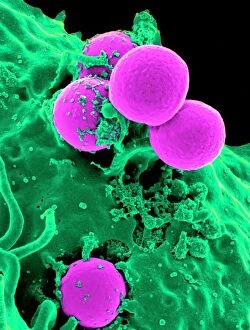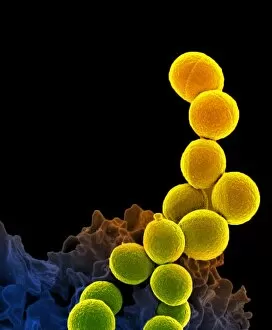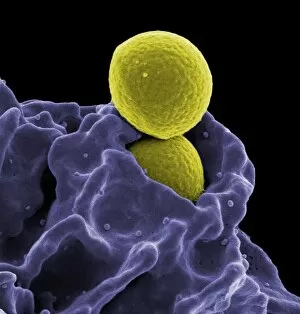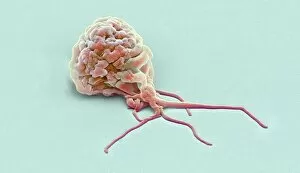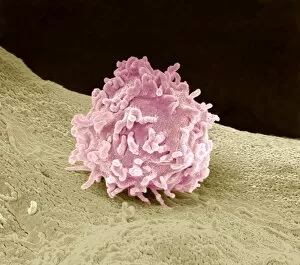Polymorphonuclear Leukocyte Collection
Polymorphonuclear leukocytes, also known as neutrophils, are the body's frontline defenders against bacterial infections
For sale as Licensed Images
Choose your image, Select your licence and Download the media
Polymorphonuclear leukocytes, also known as neutrophils, are the body's frontline defenders against bacterial infections. In these captivating SEM images, we witness the remarkable power of neutrophils as they engage in a battle against MRSA (Methicillin-resistant Staphylococcus aureus), a notorious antibiotic-resistant bacterium. The first image showcases the incredible ability of a neutrophil to engulf MRSA, highlighting its phagocytic prowess. With their flexible shape and multiple lobes in their nucleus, polymorphonuclear leukocytes possess an extraordinary capacity for engulfing and destroying pathogens. In another striking photograph, we observe the aftermath of this intense encounter. A dead neutrophil lies beside MRSA bacteria, demonstrating that sometimes even these mighty cells can succumb to overwhelming infection. This visual reminder emphasizes the importance of timely medical intervention to support our immune system's efforts. Continuing with more mesmerizing visuals, subsequent images capture additional instances where neutrophils successfully engulf MRSA bacteria. These snapshots provide further evidence of how polymorphonuclear leukocytes tirelessly combat invading microbes within our bodies. Moving on from specific encounters with MRSA, we delve into an array of SEM images showcasing activated granulocytes – a collective term encompassing various types of white blood cells involved in immune responses. The close-up views reveal intricate details such as cytoplasmic granules and surface structures that aid these cells' defensive functions. These captivating glimpses into the world of polymorphonuclear leukocytes offer us profound insights into their vital role in protecting our health. As we marvel at their relentless pursuit and destruction of harmful bacteria like MRSA, let us appreciate and respect the remarkable abilities possessed by these microscopic warriors.

